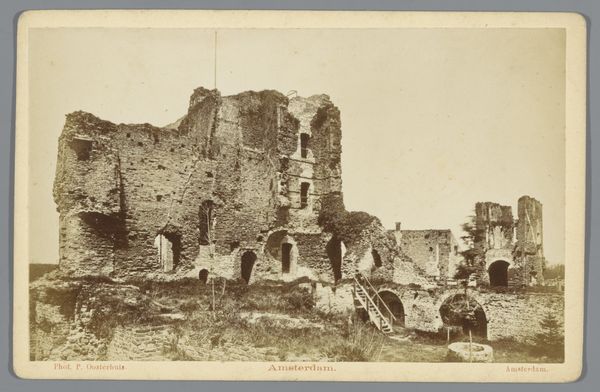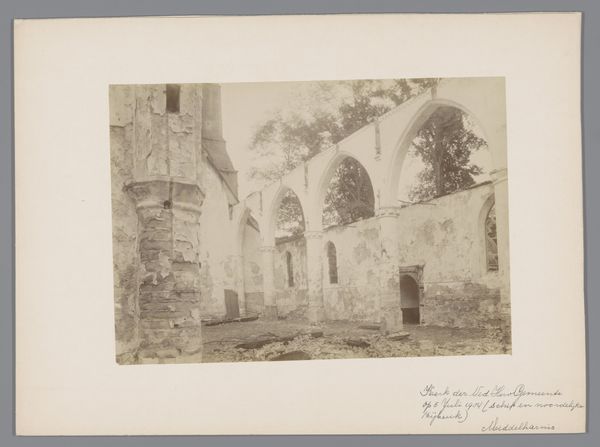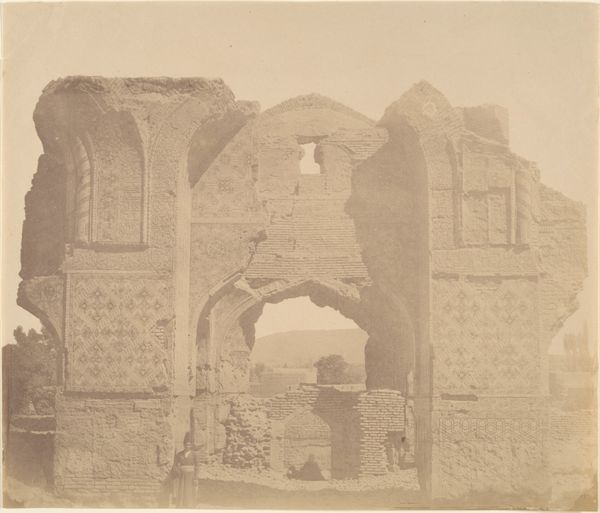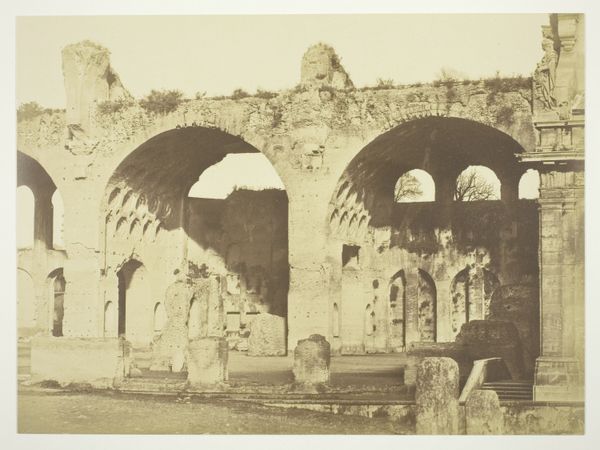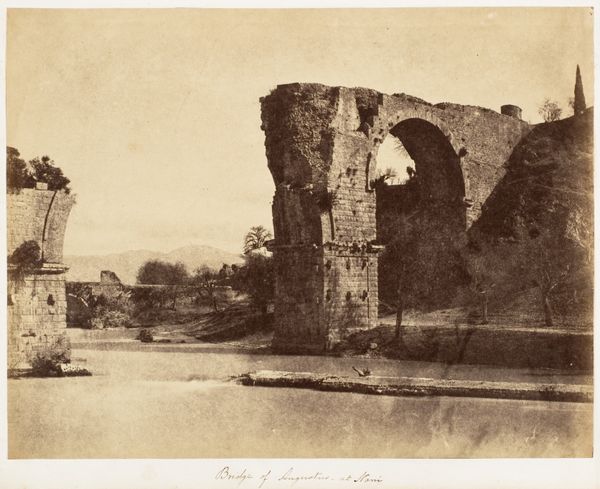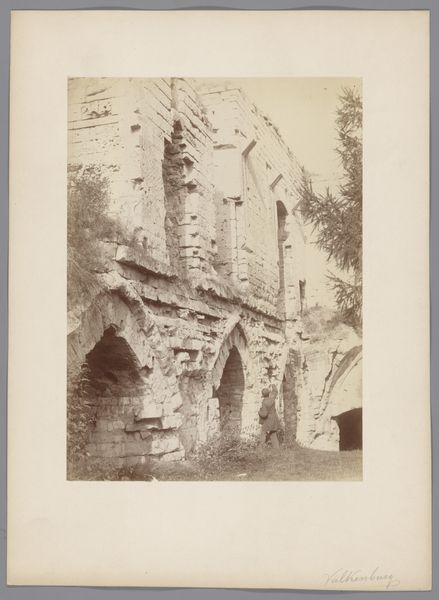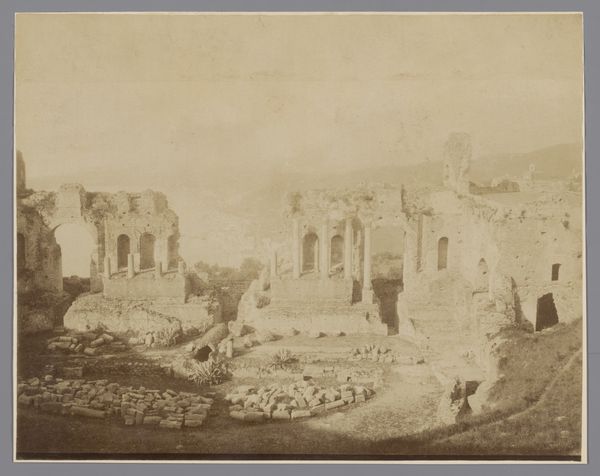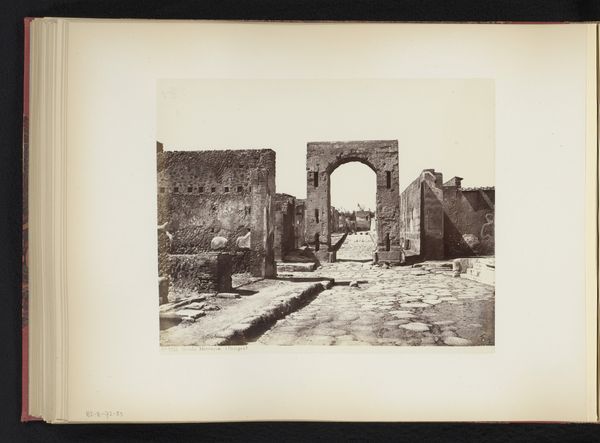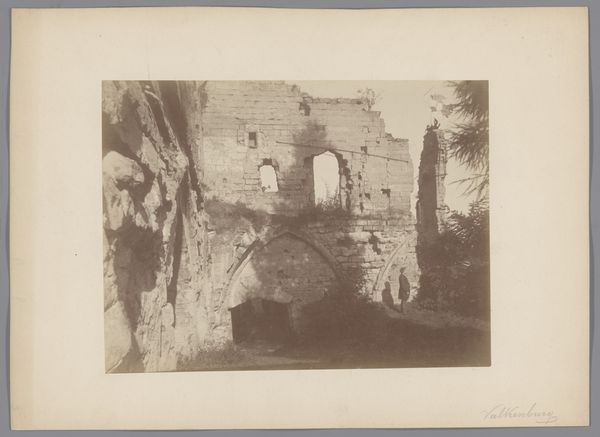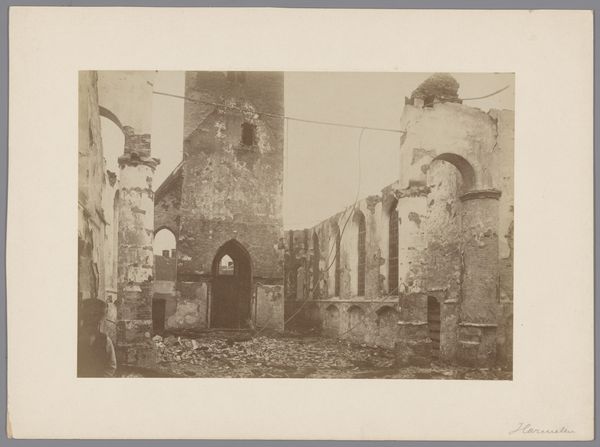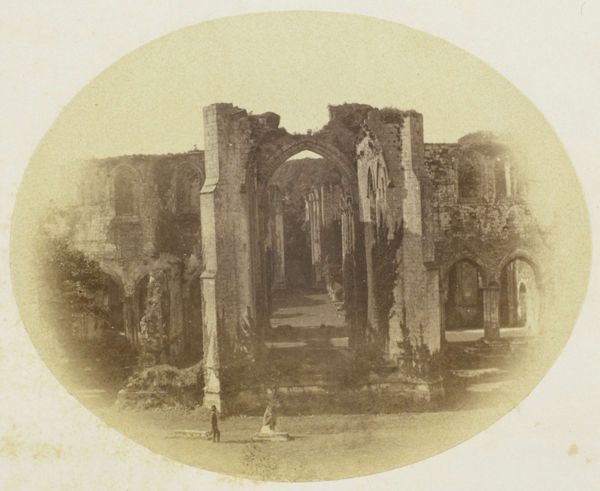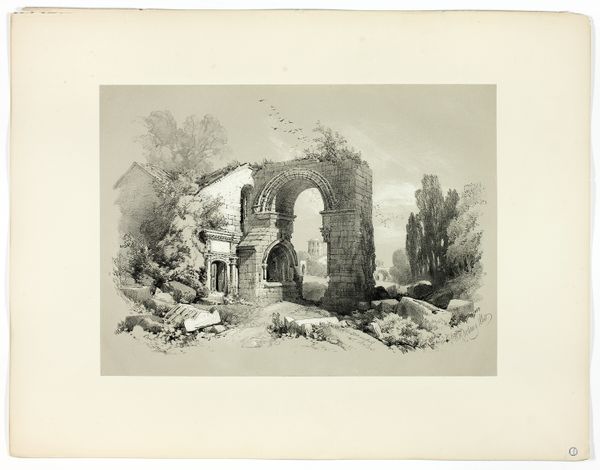
photography, albumen-print
#
landscape
#
photography
#
ancient-mediterranean
#
albumen-print
Dimensions: Image (oval): 19.7 × 24.5 cm (7 3/4 × 9 5/8 in.) Sheet: 19.7 × 24.5 cm (7 3/4 × 9 5/8 in.) Mount: 26.7 × 35.7 cm (10 1/2 × 14 1/16 in.)
Copyright: Public Domain
Editor: This is "Tempio d'Ercole", an albumen print from the 1850s by Giovanni Battista Altadonna. The ruins of the temple look so imposing, even in a state of decay. What historical context brings this piece to life? Curator: Seeing this photograph, I’m drawn to consider how the act of documenting ancient ruins was itself a statement of power and cultural identity. Think about it: in the 1850s, photography was relatively new. What does it mean to capture these ruins and circulate these images? Who had access to them, and what story did they tell? Editor: It feels like an attempt to capture the grandeur of the past but also, maybe, a romanticized vision of it? Curator: Precisely. This romanticized view becomes tied to the nationalistic projects emerging in Europe. Photography becomes a tool for asserting cultural lineage, creating a visual narrative that supports political agendas. Editor: So the choice to photograph ruins, and specifically *these* ruins, wasn’t just about aesthetics. Curator: No, it was deeply entangled with questions of power and historical narrative. The image flattens complex historical realities, creating easily digestible symbols for political and cultural agendas. How might the selection and presentation of subjects in early photography affect historical narratives and cultural perceptions? Editor: That’s a good point. I see how seemingly straightforward images like this are complex cultural artifacts. I appreciate how you frame art as interconnected with social forces. Curator: And that is important for seeing its value!
Comments
No comments
Be the first to comment and join the conversation on the ultimate creative platform.

